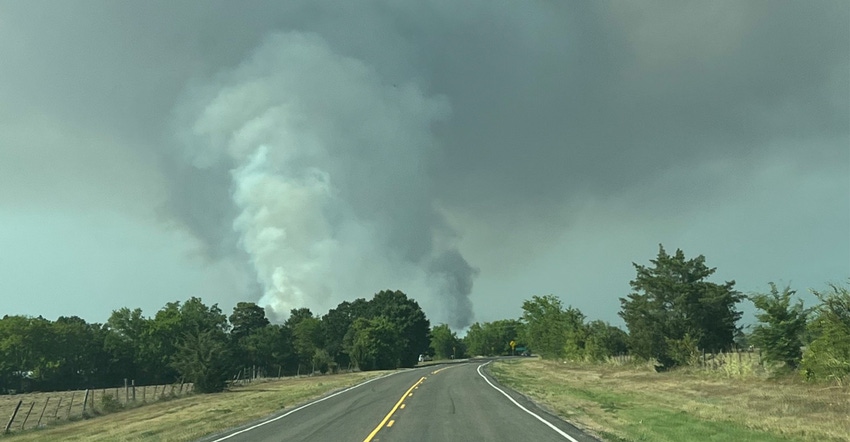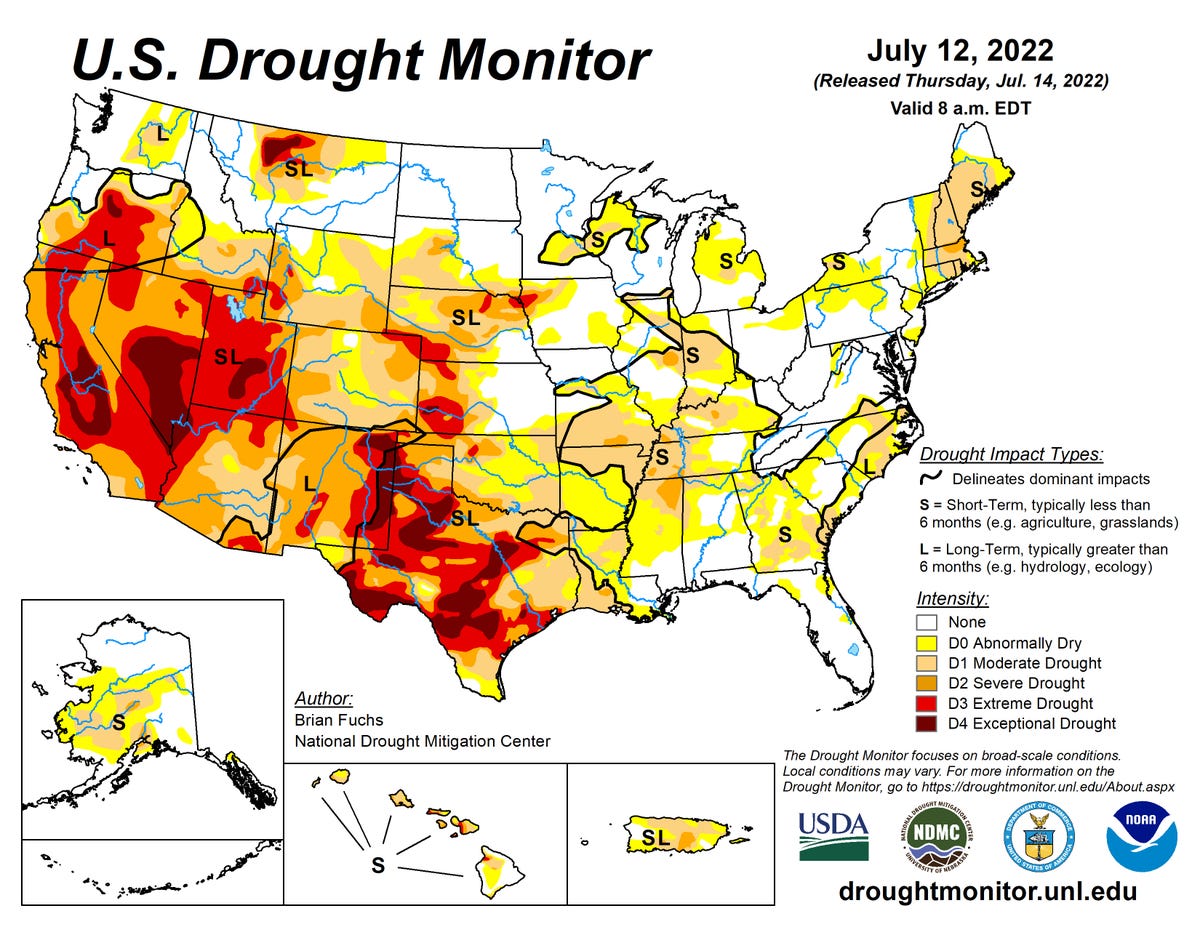Wildfire threat persists, fueled by drought, triple-digit temperatures
Texans urged to help prevent wildfire starts, Texas A&M Forest Service provides updates on significant fires.
July 20, 2022

With 99% of Texas experiencing some level of drought, critically to extremely dry vegetation and critical fire weather continue to support significant wildfires, according to Texas A&M Forest Service release.
Areas of concern include the eastern Rolling Plains, Cross Timbers, Central Texas, North Texas near the Waco and Dallas-Fort Worth areas, and south along the I-35 corridor near the Capital region. The risk for significant wildfires is also expanding east to include portions of East Texas, including areas near Palestine, Crockett, Huntsville, Tyler and Marshall.
Last week's rainfall was minimal and offered only a temporary reprieve from the dry conditions in some areas.

Update on significant wildfires
The Texas A&M Forest Service provided updates on the following active fires:
July 18, critical fire weather and critically dry vegetation contributed to extreme fire behavior in parts of North, Central and East Texas. Reports showed active crown fire and short-range ember spotting and flammable material one-quarter mile in front of the main wildfire were reported. "Active crown fire occurs where surface and crown fire energy are linked. Surface intensity is sufficient to ignite tree crowns, and fire spread and intensity in the tree crowns encourages surface fire spread and intensity," according to the National Wildfire Coordinating Group website.
“The wildfires in Palo Pinto, Somervell and Walker counties occurred in high-risk fuel types, which can exhibit extreme fire behavior when critically dry and exposed to elevated or critical fire weather,” said Luke Kanclerz, Texas A&M Forest Service fire analyst. “In these fuels, resistance to control is often high and makes suppression efforts challenging for firefighters.”
State and local firefighters, including Texas A&M Forest Service and Texas Intrastate Fire Mutual Aid System, TIFMAS, personnel, responded to 18 wildfires on July 18 for an estimated 6,594 acres burned. This includes the still-burning 1148 Fire in Palo Pinto County, the Chalk Mountain Fire in Somervell County and the Nelson Creek Fire in Walker County.
The 1148 Fire ignited in Palo Pinto County on the north side of Possum Kingdom Lake. The fire quickly escaped initial suppression efforts prompting local officials to evacuate area residents. The evacuations have since been made voluntary. Firefighters engaged in structure protection and constructing containment lines while suppression aircraft, including three fire boss single-engine air tankers, helicopters and large airtankers, provided aerial support. The fire is an estimated 500 acres and 10% contained.
The Somervell County Chalk Mountain Fire ignited southwest of Glen Rose and spread quickly through dry vegetation. Fire crews focused on operations related to life safety and structure protection and, where possible, constructing containment lines. The fire is an estimated 4,000 acres and 10% contained.
July 19, the Texas A&M AgriLife Extension Service responded to a state request deploying three of its Disaster Recovery Assessment, DAR, members and DAR director to support the AgriLife Extension agent in Somervell County and Texas Animal Health Commission, TAHC, with animal needs assessments. DAR agents are onsite and monitoring activity at the Somervell County Expo Center, offering shelter for small and large animals.
The Nelson Creek Fire in Walker County is burning approximately 9 miles north of Huntsville and is 1,800 acres and 35% contained. Ground crews and aviation resources made good progress overnight despite active fire behavior. The fire has burned into rough terrain and forward progression has slowed.
“The conditions observed yesterday contributed to extremely active wildfires across the state,” said Wes Moorehead, Texas A&M Forest Service fire chief. “The increased operational tempo will continue over the next week. Texas A&M Forest Service has strategically positioned incident commanders, fire personnel, equipment and aircraft across areas of concern for a quick response.”
Aviation resources were available to assist throughout the day and additional aircraft were ordered to respond, including a DC-10, one of the largest aircraft in the national airtanker fleet. Suppression aircraft utilized water and retardant throughout the afternoon, effectively slowing the spread of the wildfires. A total of 38 aircraft are staged in Texas for wildfire response.
Texas A&M Forest Service reminds the public to stay wildfire aware. If a wildfire is spotted, immediately contact local authorities. A quick response can help save lives and property.
For current conditions and wildfire outlook, visit the Texas Fire Potential Outlook.
Source: is AgriLife TODAY, which is solely responsible for the information provided and is wholly owned by the source. Informa Business Media and all its subsidiaries are not responsible for any of the content contained in this information asset.
About the Author(s)
You May Also Like




.png?width=300&auto=webp&quality=80&disable=upscale)
